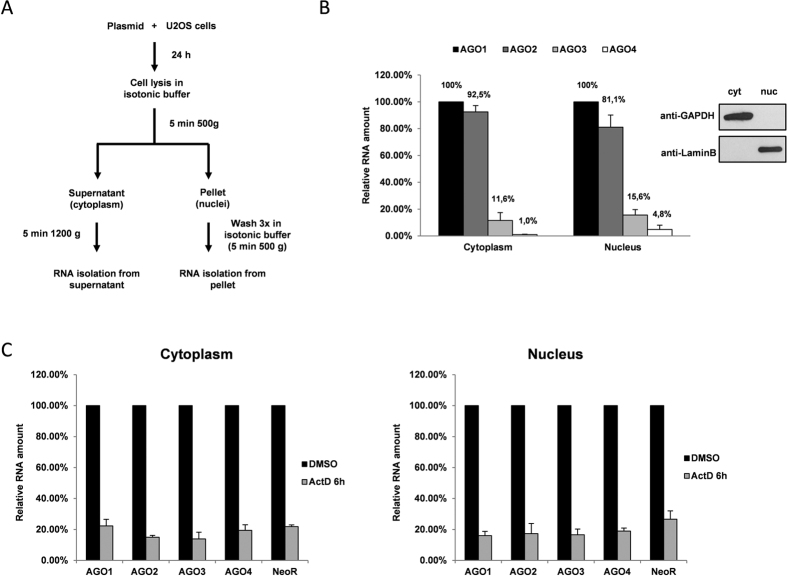Figure 2. Nuclear pathways are responsible for the reduced ectopic overexpression of AGO3 and AGO4 mRNAs in human cells.
(A) Schematic representation of the experimental procedure of U2OS cells fractionation into nuclear and cytoplasmic fractions after transfection with recombinant constructs. (B) (left) TaqMan qRT-PCR analysis demonstrating relative overexpression of recombinant Argonaute transcripts in cytoplasmic and nuclear fractions after transfection of U2OS cells with pAGO(1–4)LS-nk constructs. The qPCR data is presented as mRNA levels relative to cells transfected with AGO1 encoding plasmids, and normalized on the NeoR mRNA levels in each sample. (right) Western immunoblotting demonstrating the absence of cytoplasmic GAPDH protein in nuclear cell fractions and nuclear LaminB protein in cytoplasmic fractions. (C) The amounts of AGO1, AGO2, AGO3, AGO4 and NeoR recombinant transcripts in the cytoplasm (left) and nuclear (right) fractions in pAGO(1–4)LS-nk transfected U2OS cells after treatment with actinomycin D for 6 hours (relative to cells treated with DMSO). The qRT-PCR data is presented as mRNA levels for each transcript type relative to cells treated with DMSO, and normalized on the levels of spiked-in synthetic cel-miR-39 control. Note, the half-lives of all transcripts are similar in both cytoplasm and the nuclei.

